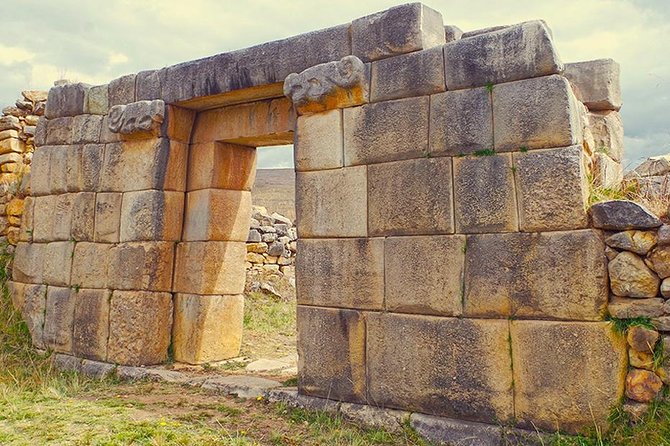Huanuco Pampa, an intriguing site nestled in the highlands of Peru, stands as a testament to the Inca civilization’s architectural prowess and administrative acumen. This ancient city, also known as Huánuco Viejo, was a significant administrative center within the Inca Empire, featuring a distinctive layout that includes a central plaza, storage facilities, and residential areas. The site’s strategic location and design reflect the Inca’s sophisticated approach to governance and urban planning.
Get your dose of History via Email
Historical Background of Huanuco Pampa
Discovered by modern archaeologists in the 20th century, Huanuco Pampa’s origins trace back to the Inca Empire. The Incas, known for their extensive and well-organized empire, built this site. It served as a vital administrative hub, linking the northern and southern parts of their territory. The city’s design and architecture reflect the Inca’s strategic planning and cultural practices.
Spanish conquistadors encountered Huanuco Pampa in the 16th century, but its significance waned post-conquest. The site later became a subject of interest for historians and archaeologists. Excavations have revealed insights into its past inhabitants and their way of life. Huanuco Pampa has also been the scene of important historical events, including local resistance against Spanish rule.
The city’s construction is attributed to the Inca ruler Topa Inca Yupanqui in the late 15th century. It flourished as a nexus for administrative and ceremonial activities. The Incas used it to exert control over the surrounding regions. After the Spanish conquest, the site was abandoned and fell into obscurity until its rediscovery.
Over the years, Huanuco Pampa has attracted researchers who have sought to understand its role within the Inca Empire. The site’s well-preserved state offers a window into Inca urban planning and social organization. It has also provided valuable information on the Inca’s agricultural practices and food storage techniques.
While not as well-known as Machu Picchu, Huanuco Pampa holds its own historical importance. It has been the focus of various studies that have contributed to our understanding of the Inca civilization. The site continues to be a focal point for archaeological research and conservation efforts.
About Huanuco Pampa
Huanuco Pampa is an architectural marvel, showcasing the Inca’s mastery in stone construction. The site features a large central plaza, around which various administrative and ceremonial buildings are arranged. The plaza was likely used for public gatherings and rituals, emphasizing the city’s communal and political significance.
The city’s layout includes residential areas, with structures built using local stone and adobe. These dwellings provided housing for the administrators, artisans, and laborers who lived and worked at the site. The presence of numerous storage facilities, known as qullqas, highlights the importance of Huanuco Pampa as a distribution center for goods.
One of the architectural highlights of Huanuco Pampa is the ushnu, a ceremonial platform situated in the plaza’s center. This elevated structure was possibly used by Inca leaders for religious ceremonies and to address the populace. The ushnu’s strategic placement underscores its significance within the city’s social and religious life.
The construction methods of Huanuco Pampa reflect the Inca’s advanced engineering skills. The use of precisely cut stones that fit together without mortar is a hallmark of Inca architecture. The site’s buildings have withstood the test of time, partly due to these sophisticated building techniques.
Archaeological excavations have uncovered a network of roads and pathways connecting Huanuco Pampa to other parts of the Inca Empire. This infrastructure facilitated communication and transport, further cementing the city’s role as an administrative center. The site’s design and construction offer a glimpse into the Inca’s complex societal structure.
Theories and Interpretations
Several theories have emerged regarding Huanuco Pampa’s purpose within the Inca Empire. Some scholars suggest it functioned primarily as an administrative center, while others believe it had significant religious and ceremonial roles. The site’s large plaza and ushnu support the latter interpretation.
Mysteries still shroud Huanuco Pampa, particularly concerning the daily lives of its inhabitants. Archaeological evidence points to a stratified society, but the specifics of social interactions and governance remain topics of research and debate.
Theories about Huanuco Pampa’s decline postulate that the Spanish conquest and the introduction of new administrative systems led to its abandonment. However, some argue that internal factors within the Inca Empire may have also played a role. The true reasons behind its fall are still being pieced together by historians.
Historical records and archaeological findings have been matched to interpret Huanuco Pampa’s past. Carbon dating and other scientific methods have helped establish a timeline for the site’s construction and use. These techniques have provided a more accurate picture of the city’s historical context.
Despite ongoing research, Huanuco Pampa retains an air of mystery. Its remote location and the Inca’s lack of a written language mean that many aspects of the site are open to interpretation. Scholars continue to analyze the ruins to gain deeper insights into the Inca civilization.
At a glance
Country: Peru
Civilization: Inca
Age: Late 15th century AD

